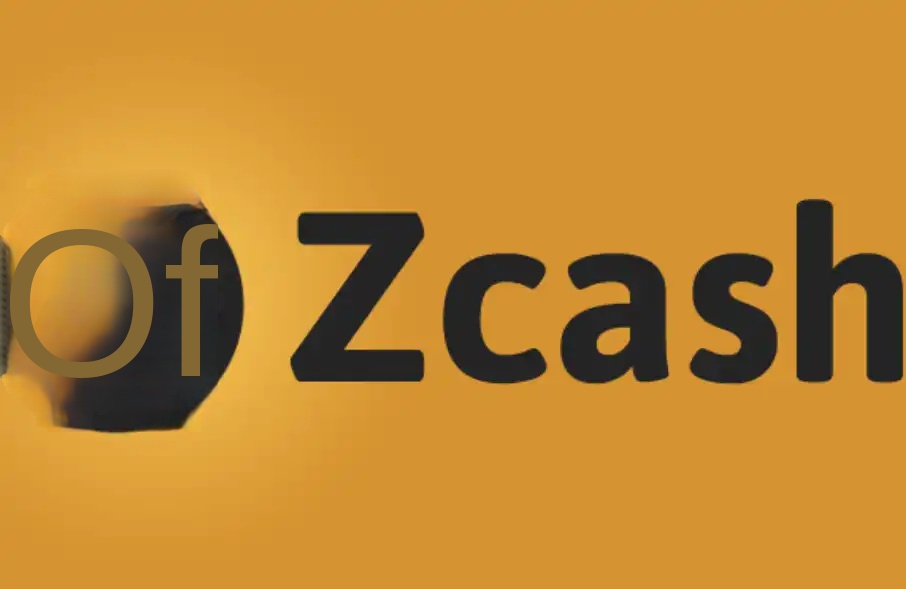From the White House to Web3: A Look Back at Arbitrum Founder Ed Felten's Past.
Original author: Jaleel
Editor: Jack
Over the weekend, the proposal regarding the distribution of DAO treasury tokens in the Arbitrum community sparked intense discussion. The team transferred the tokens to their own wallets and investment institutions before the community vote was even finished (BlockBeats note: for more information on the AIP-1 proposal, please read "First act, then report? Arbitrum Foundation seeks to control $1 billion through proposal"). Amidst the criticism of "DAO in name only," some people began to learn about the story behind the Arbitrum team.
「Lab experiment」
Edward William Felten, born on March 25, 1963. Felten studied at the California Institute of Technology and received a degree in physics in 1985. From 1986 to 1989, he worked as a programmer at the California Institute of Technology and participated in a parallel supercomputer project. He then pursued a graduate degree in computer science at the University of Washington. He received his MS degree in 1991 and his PhD in 1993, with a thesis on automated protocols for communication between parallel processors.
In 1993, he joined the Computer Science Department at Princeton University as an assistant professor and was promoted to associate professor in 1999 and professor in 2003. In 2005, he became the director of the Center for Information Technology Policy (CIPT) at Princeton. He has also served as a consultant for law firms, companies, private foundations, and government agencies. In 2006, he joined the Woodrow Wilson School of Public and International Affairs, expanding his research into public relations. From 2006 to 2010, he was a board member of the Electronic Frontier Foundation (EFF). In November 2010, he was appointed as the Chief Technologist of the Federal Trade Commission in the United States.

Ed Felten, as the director of CIPT, video speech, image source from the Internet
Between 2012 and 2013, Ed returned to his teaching position and began to study Bitcoin and blockchain technology. Ed's research on Bitcoin began with a paper he wrote on the dynamic and stability of Bitcoin mining mechanisms. At that time, everyone believed that the Bitcoin system was stable, and if everyone acted according to their own motives, the inevitable result would be that everyone would follow the rules of Bitcoin. However, Ed Felten proved that this was not the case, and there were infinitely many outcomes that were stable, but different from the written rules of Bitcoin.
Since then, he has launched several projects related to Bitcoin. For example, building tools to track and diagnose the behavior of peer-to-peer networks used by Bitcoin participants to spread information about what is happening, researching the dynamics of mining pools, new types of double-spending attacks and how participants should defend against them, and designing a decentralized prediction market using the Bitcoin protocol.
Meanwhile, a new concept called "Smart Contract" has also caught Ed's attention. For someone who has been exposed to software and programming since childhood, the concept of smart contracts reminded him of the booming internet industry in the 90s. "Smart contracts will become a new software platform," Ed told himself and his colleagues, and thus began his research on the future development of smart contracts. After seeing the potential congestion problem in the Bitcoin network, Ed decisively determined his research direction - scalability solutions. Remember, at this time, the blockchain world did not have Ethereum yet.
The year was 2014, and IFP technology (Interactive Fraud Proof) provided a new possibility for the scalability issue of blockchain: a side-chain or L2-Chain could move all computational processes off-chain while enjoying the security of the underlying chain, greatly improving the efficiency of blockchain operations.
This academic year, Ed spent all his time in his office, holding paper money and drawing various charts and threads about the IFP technology stack on the whiteboard. In the fall semester, one of Ed's professor colleagues offered a blockchain course, and the final project was to design a blockchain-based project in groups. Soon, a group of six people found Ed and began to learn and discuss with him how to build a "scaling chain" on the underlying chain.
In early 2015, in a classroom at the Computer Science Department of Princeton University, Arbitrum was first presented as a final project. Three students stood nervously in front of a whiteboard, introducing this "L2 scaling chain" with only a hypothetical underlying chain to their professor and classmates.

Arbitrum's final presentation, image source from the internet
Like most of the students present, Ed is very satisfied with this final assignment and plans to use Arbitrum as a starting point to carefully study the future of Roll-Up technology. However, unexpectedly, just as Ed was preparing to show off his skills, he received a call from the White House inviting him to assist with technical security work.
On May 11, 2015, Ed Felten was appointed as the White House Deputy Chief Technology Officer to provide technical security for the remaining year of the Obama administration, and this period of work greatly changed Ed's view of the word "pressure". "Although in Web3 entrepreneurship, you also have to be responsible for many people, but it cannot be compared with being a presidential advisor," Ed often tells his friends, "Every decision made by the president affects the life and death of tens of millions of people." Due to the overwhelming work pressure and demands, Ed Felten had no time and energy to consider his academic career, and the launch of the "Arbitrum Plan" also came to a standstill.

Ed Felten, who served as Deputy Chief Technology Officer at the White House, image source from the internet
In January 2018, Ed Felten returned to Princeton University to continue his research on computer technology. During a Computing Research Association summit that year discussing the future of AI, Ed Felten seemed to have lost interest in blockchain and cryptocurrency. When asked by the audience about cryptocurrency, Ed said, "I think cryptocurrency does offer a different way of payment, but in many transaction scenarios, the cost and challenges surrounding payment are less than those surrounding issues of trust, responsibility, and risk."

In 2018, Ed Felten gave a speech on AI technology at the Computing Research Association summit. Image source from the internet.
A few months later, Ed's two doctoral students, Steven Goldfeder and Harry Kalodner, found him and extended an invitation: "Hey, remember that thing called Arbitrum? Let's make another one." "Sure!" Without hesitation, Ed accepted the invitation from his students.
In August 2018, Harry Kalodner presented a joint academic paper titled "Arbitrum: Scalable, private smart contracts" at the 27th USENIX Security conference. The paper's main focus was to address the scalability issues of Ethereum by creating Arbitrum without compromising security. Later that year, the three authors co-founded Offchain Labs and Arbitrum was officially launched.

In 2018, Harry Kalodner introduced Arbitrum at the USENIX Security Symposium. Image source from the internet.
Arbitrum Brief Chronology
We all know that Arbitrum, as an Ethereum Layer 2 scaling solution, has successfully overcome many initial challenges and undergone a series of developments since its launch in 2020. Before discussing the recent hotly debated "DAO incident" and (AIP-1) proposal, let's briefly review Arbitrum's important development history.
In February 2020, the first version of Arbitrum's testnet went live, supporting only a specific application chain for DAC and without contract deployment. In October 2020, a new round of Arbitrum's testnet and general contract deployment were launched.
In January 2021, OffchainLabs launched a batch of demo products for the DeFi ecosystem on the Arbitrum testnet. In May of the same year, the company deployed the Arbitrum One testnet, with over 250 teams applying for access. In September, Arbitrum launched the mainnet Arbitrum One and announced the completion of a $120 million Series B financing round.
In June 2022, Arbitrum launched the Odyssey project, which allows users to earn rewards by participating in the Odyssey NFT promotion or using the Arbitrum ecosystem. The Odyssey project, originally planned to run for 8 weeks, was suspended after the first week. The root cause of the suspension was the large number of new users that congested the network, resulting in high gas fees that even exceeded those of the Ethereum mainnet. This led them to later release the Nitro mainnet based on the WASM architecture.
In July 2022, Arbitrum announced the construction of a new chain called "Arbitrum Nova". On September 1st, they successfully upgraded Arbitrum One to the Nitro version, which improved network speed and reduced transaction costs. They are far ahead of Optimism in terms of transaction volume and daily active users, with a market share of 52.5%.
On February 7th, 2023, the Offchain Labs development team announced the launch of the next-generation programming environment Stylus for Arbitrum One and Arbitrum Nova. Stylus is significantly faster, reducing costs and fully interoperable with the Ethereum Virtual Machine. It is even referred to as an upgraded version of the Ethereum Virtual Machine, known as "EVM+".

Since its launch, Arbitrum has undergone a series of developments, including deploying test networks, launching the Odyssey project, and releasing Nitro. The recent Nitro upgrade and upcoming Stylus programming environment demonstrate the platform's commitment to providing fast, efficient, and low-cost solutions for Ethereum users. Even on March 23, Arbitrum's daily trading volume reached a historic high of 1.3 million, compared to Ethereum's mainnet trading volume of 1.08 million.
It can be said that before this, the operation of Arbitrum was very successful, and the community also loved Arbitrum. However, just a few days after the ARB Token airdrop, Arbitrum experienced a "DAO incident" storm, and the incident was caused by the (AIP-1) proposal.
AIP-1 "Crash Case"
On March 28th, the Arbitrum community launched the Arbitrum Improvement Proposal 1 (AIP-1) voting on Snapshot. The proposal aims to introduce a decentralized autonomous organization structure called ArbitrumDAO, which will be managed by ARB holders. The Arbitrum Foundation will also serve and be managed by the ArbitrumDAO community.
However, the voting has not yet ended and the AIP-1 proposal has not been passed. It was revealed in a blog post by Patrick McCorry that the Arbitrum Foundation had already created a multi-signature wallet with the name "Arbitrum DAO Treasury2" and received nearly 700 million ARB tokens, which had already been sold for stablecoins. This immediately sparked community discussion and dissatisfaction among token holders.
Community and some partners are extremely disappointed with the Arbitrum team and the so-called governance, believing that AIP-1 is not a real vote and throws DAO principles out the window. The proposal was executed without community consent, so what is the point of such a vote?
Under multiple pressures, on April 3rd, Arbitrum officials responded several times on social media regarding this matter. Arbitrum's decentralized governance is proceeding according to the original plan, but many decisions must be made before the DAO is officially launched. The goal of the AIP-1 proposal is to allow the community to participate in initial decision-making and ultimately allow token holders to approve initial decisions and frameworks through DAO voting.
On important points of controversy, Arbitrum denies that the fund sold 50 million ARB before the AIP-1 proposal was voted on. 40 million ARB has been allocated as loans to mature participants in the financial market, and the remaining 10 million ARB has been exchanged for fiat currency to pay for operating costs.
With the public opposition from TreasureDAO, the largest governance representative of the Blockworks Research and Arbitrum ecosystem, the impact of the "DAO incident" has once again escalated.
Blockworks Research publicly stated that it voted against the proposal and criticized AIP-1 for representing a regression in the current state of community governance. Subsequently, TreasureDAO also stated that it voted against the AIP-1 proposal put forward by the Arbitrum Foundation and requested that Arbitrum resubmit a proposal that clearly outlines the scope of the special appropriation plan and splits the AIP-1 proposal. In response, Arbitrum promised to address the feedback received from the community and to rework each part of the proposal this week.
At the time of writing on April 3rd at 11:15, according to the latest voting data from Snapshot, the comprehensive governance package Arbitrum Improvement Proposal (AIP-1) initiated by the Arbitrum Foundation has reversed from an initial 81.7% approval to a current opposition rate of 82.58%.

The voting for AIP-1 proposal will end at 6:13 on April 4th Beijing time. Under such great public pressure, the possibility of AIP-1 proposal being passed is very small. So what will happen to Arbitrum next? Everyone in the community is eager to know, and BlockBeats will continue to pay attention.
Welcome to join the official BlockBeats community:
Telegram Subscription Group: https://t.me/theblockbeats
Telegram Discussion Group: https://t.me/BlockBeats_App
Official Twitter Account: https://twitter.com/BlockBeatsAsia


 Forum
Forum Finance
Finance
 Specials
Specials
 On-chain Eco
On-chain Eco
 Entry
Entry
 Podcasts
Podcasts
 Activities
Activities
 OPRR
OPRR









